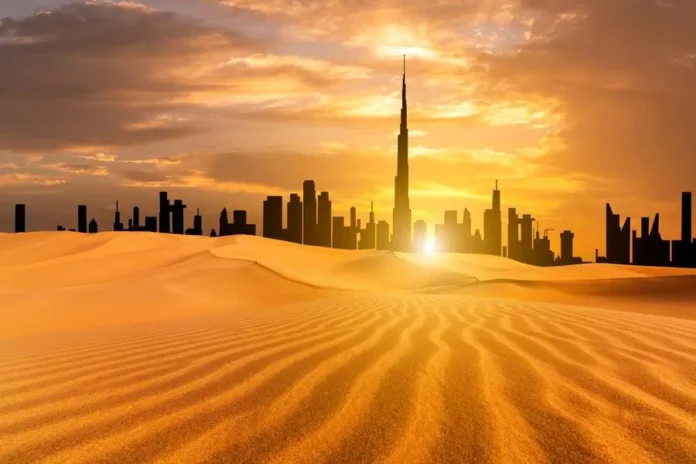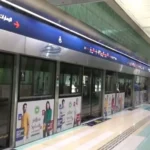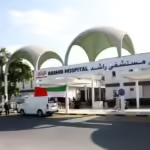How UAE Residents Are Coping with Record Heat: Real Stories, Smart Solutions, and Cultural Resilience
Picture walking out of your flat and feeling as though you have stepped directly into a hairdryer. The sun pours down, the air stutters, and the earth heats up like a frying pan. For people living in the United Arab Emirates (UAE), it is not a sensationalist metaphor—it’s reality in the summer.
UAE temperatures often reach above 50°C (122°F) in the peak summer months, and courtesy of climate change, the mercury only continues to rise higher. But for all that heat, individuals here aren’t merely getting by—they’re innovating, adapting, and thriving.
In this post, we’ll explore how UAE residents—locals and expats alike—are navigating this extreme heatwave era. From smart homes and shaded cities to health-conscious habits and cultural wisdom, here’s a deep dive into how the UAE is keeping its cool.
Why Is It So Hot in the UAE? A Look at the Rising Temperatures
A Desert Climate with a Modern Twist
The UAE naturally has a hot desertic, characterized by:
- Long, very hot summers (May to September)
- Mild, brief winters
- Very little rainfall
But in recent years, something’s different. The UAE’s National Center of Meteorology (NCM) reported that 2023 had the highest two-decade high average summer temperature. Why? Climate change and explosive urbanization.
Record Heat in the Numbers
- Humidity levels can drive the “feels-like” temperature over 60°C.
- Global warming has raised regional average temperatures by 1.5°C to 2°C during the last 50 years.
How Residents Are Adapting: From Air-Conditioned Commutes to Cultural Habits
Heat adaptation in the UAE is a way of life. Let us see how the population is keeping cool—physically, mentally, and socially.
1. Embracing Smart Technology: Cooling with Innovation
Smart Homes and Offices
- Automatically regulate indoor temperature
- Track energy consumption to maximize cooling
- Employ reflective materials for minimal heat absorption
Example:
Sarah, who lives in Downtown Dubai as a British expatriate, relies on a smart thermostat linked to her mobile phone. “When I arrive at work, I switch on the AC from my phone so that the apartment is cool when I open the door. It saves power and sense.”
AC Everywhere—Even Bus Stops
Public bus stops in most cities are totally air-conditioned, providing relief to commuters while they wait. It’s not an amenity—it’s survival.
Green Cooling Tech
District cooling is becoming more popular—centralized plants cool several buildings using chilled water.
Solar-driven fans and passive-cooling design are being piloted at sustainable developments such as Masdar City.
2. Clothing and Culture: Smart Dressing for Hot Weather
Sensible Traditional Wear
The traditional kandura (for men) and abaya (for women) of the gulf art aren’t purely cultural wear they’re sensible:
- Breathable, light-colored material
- Offer sun protection
- Enable air flow while maintaining skin coverage
Numerous expats have also turned to:
- Loose-fitting cotton or linen apparel
- Wide-brimmed hats and UV sunglasses
- Cooling scarves and UV arm sleeves
3. Thinking Smart About Daily Habits:Overcome the Sun Diplomatic Adjusting Work Schedules
- Outdoor work, such as manufacturing, is prohibited during the high noon break time (12:30 PM to 3:00 PM) between June 15 and September 15.
- Early starts or night work are often encouraged by many companies to escape the hottest part of the day.
- Steering Clear of the Outdoors Midday
- School schedules change during summer months.
- Sports and leisure move indoors or are rescheduled to early morning or late evening.
Example:
Ali, a personal trainer in Sharjah, says, “We’ve moved all bootcamp sessions to 6 a.m. Even the diehard inhabitants can’t handle noon heat anymore.”
4. Hydration and Diet:Energizing for the Heat
Most residents bring electrolyte packets along if they’re outdoors in the sun.
- Most loved rehydrating beverages:
- Fresh coconut water
- Watermelon juice
- Electrolyte water
- Buttermilk or laban, a classic cooling beverage
Cooling Foods to Overcome the Heat
- Cucumbers, melons, mint, and yogurt are basic kitchen items in most households.
- Light, vegetable-based meals are more desirable than heavy, spicy foods.
5. Urban Planning for Shade and Sustainability
Green Urban Projects
- Cities such as Dubai are adding more parks, shaded walkways, and greenery.
- More stroller walkways and parks are part of the Dubai 2040 town Master Plan.
- White and Reflective Surfaces
- Municipalities are trying out reflective white coatings on rooftops and pavements to mitigate the urban heat island effect in order to counter it.
6. The Role of Community and Culture
Shared Spaces for Relief
Malls are reality summer community center people stroll,converse , and shop in cool comfort.
Mosques and cultural centers offer shaded resting places and free cold water during hot hours.
Community Initiatives
Voluntary organizations give hydration ads to delivery workers and laborers.
Government campaigns increase awareness about heat stroke prevention.
What Are the Health Risks—and How Are People Managing Them?
Common Heat-Related Illnesses in the UAE
- Heat exhaustion
- Heatstroke
- Dehydration
- Sunburn
- Heat rashes
Preventive Measures Residents Take
- Wearing SPF 50+ sunscreen
- Using UV-protective umbrellas
- Taking frequent cold showers
- Maintaining vehicles ventilated or shaded
The Flip Side: Challenges and Trade-offs
Advantages of Adapting to Extreme Heat
- Promotes innovation in technology and architecture
- Drives green urban planning
- Generates awareness among communities towards climate adaptation
Drawbacks and Concerns
- Increased dependence on air conditioning raises energy use
- Poorer workers have higher health risks
- Summer tourism goes down outdoor
- Psychological exhaustion—termed “heat fatigue”—affects mood and performance
The Road Ahead: UAE’s Long-Term Plans to Tackle the Heat
- The UAE is not playing with fire. In fact, the government is investing in long-term fixes such as:
- Afforestation and tree-planting initiatives
- Climate-resilient infrastructure
- Hosting international climate conferences (such as COP28 in Dubai)
- Encouraging public transport to mitigate urban congestion and heat traps
Scorching Futures: How Record Heat Is Changing the Way UAE Residents Live, Work, and Think
1. Changing Habits: “Indoor” the New Way of Life
From Mall Marathons to Beach Weekends
- Summers once were about swift excursions to the beach in the morning or dusk desert barbecue. But today?
- Families are spending weekends indoors, structuring social lives around mall times, cinema openings, and indoor playgrounds.
- Cafes and restaurants now favor indoor seating, even increasing space in the expectation of reduced outdoor business.
- Schools are responding with increased indoor recess, virtual summer camps, and inventive strategies to keep children active indoors.
The Mental Health Impact of “Heat Lockdown”
- Prolonged periods indoors can induce what psychologists refer to as “heat fatigue” or “climate stress.”
- Symptoms:
- Mood swings and irritability
- Social withdrawal
- Sense of isolation, particularly among expats
Example
Rohan, an Indian software engineer, says, “It’s cabin fever but with sunlight blazing through your window. You’re trapped, even when you’re actually free.”
2. The Economic Cost of Staying Cool
Electricity Bills Are Soaring
The average summer DEWA bill (Dubai Electricity and Water Authority) for a 2-bedroom apartment can triple from May to August. That’s behind changes in the way people cool their apartments:
- Zoning AC units (cooler only occupied areas)
- Blackout curtains and window films
- Solar panels for long-term benefits
Real Estate Trends Shift Towards Climate-Smart Homes
Homebuyers and renters are increasingly seeking:
- Insulated structures
- Energy-efficient cooling systems
- North-facing windows (to reduce sun exposure)
- Access to green areas and shaded walkways
- Projects such as Masdar City and Sustainable City are experiencing increased interest because of their environment-centric infrastructure.
3. Work Culture Is Changing Under Climate Pressure
Remote Work Isn’t Convenient It’s Climate-Smart
Across summer hotspots, most businesses now:
- Offer flexible timings or WFH arrangements
- Encourage shorter office days
- Hold virtual meetings instead of in-office ones, even in the same city
- Construction, delivery, and outdoor workers are shielded by government-legislated midday break law, but enforcement is crucial—and still evolving.
Industries Forced to Think Again
- Tourism: Outdoor daytrip are canceled or moved to dawn/dusk.
- Retail: Pedestrian traffic goes all indoors.
- Events & Festivals: Large events such as Expo 2020 employed mist sprays, covered domes, and nighttimes to balance heat.
4. Parents Are Raising “Heat Generation” Kids Differently
Children Grow Up Indoors More Than Ever
Today’s kids in the UAE:
- Spend much less time outside than children 10–20 years ago.
- Take indoor sports, robotics, and art classes as summer substitutes.
- See parks and beaches as winter-only options.
Parent concerns:
- Less physical activity and vitamin D
- Social development within indoor-only playgroups
- More screen time
Solution trends:
- Indoor “edutainment” venues such as Kidzania, OliOli, and Adventure HQ
- Trampolines, home gyms, and VR games to encourage activity
5. Redesigning Long-Term Plans: Climate Becomes a Life Consideration
Residency, Travel, and Retirement Choices
Climate is now affecting major decisions:
- Some expats are revisiting long-term residency, particularly expats with young children or aging parents.
- Residents are availing “heatcations” (travelling back home or to cooler nations) between June and September.
- Solitude options now more often include cooler landscapes or UAE’s northern emirates such as Ras Al Khaimah and Fujairah that are slightly more modest .
Climate-Driven Migration Within the UAE
- Individuals are shifting from urban heat islands (concentrated city areas) to suburban tree-lined communities such as Arabian Ranches, Jumeirah Golf Estates, or Al Barari.
- Northern Emirates provide more affordable living and slightly cooler summer temperatures through altitude or nearness to the sea.
6. How the Government Is Responding—Beyond Cooling Centers
Sustainability Campaigns Are Not Just Buzzwords
- Net-zero emissions targets
- Mass greening initiatives, such as planting trees and recycling water
Urban Heat Mitigation Plans
- Dubai’s Master Urban Plan 2040 emphasizes walkability, tree canopy, and public transport.
- Cool pavement is being trialed—substances that retain less heat and reflect sunlight.
What It All Means: Climate Adaptation Becomes Cultural
Adapting to unprecedented heat isn’t individual survival anymore—it’s about transformation in groups. It’s redefining:
- How we design cities
- How we raise children
- How we craft work
- How we relate to one another
- And whereas it’s simple to let ourselves be overwhelmed by day-to-day unease, there’s a galvanizing undertone too: resilience and reinvention.
The UAE, having constructed metropolises out of sand and ocean in a matter of a couple of decades, is now shifting to take the lead in Middle East climate adaptation.
Takeaway: From Surviving to Thriving in a Hotter Future
Here’s how UAE citizens and planners can keep leading the way:
- Cool more sustainably with smart technology and district cooling
- Increase tree cover and shaded public spaces
- Teach the next generation how to adjust weather.
- Foster climate-resilient innovation and local entrepreneurs
- Build resilient communities to overcome loneliness during long summers
- Stay indoors during peak hours
- Hydrate—more than you think you need
- Dress in light, loose-fitting clothing
- Practice sunscreen and UV protection
- Get breaks in air-conditioning
- Be respectful of local customs—they’re often practical as well
- Be aware of signs of heatstroke (dizziness, nausea, fast heart rate)
With the proper attitude and precautions, even record heat can be handled wisely.
Conclusion: Heat Is the Challenge—Adaptation Is the Legacy
The increasing heat in the UAE is no longer seasonal discomfort—it’s a determining force that’s transforming the way people live, work, raise their families, and construct the future. But if there’s one thing that the story of the UAE has consistently demonstrated, it’s that resilience is part of its DNA.
From hi-tech air conditioning and eco-friendly buildings to changing work cultures and environmentally aware lifestyles, locals aren’t just surviving the record-breaking temperatures—they’re coping with resourcefulness, determination, and foresight.
Yes, the struggles are legitimate. Climate stress, skyrocketing energy prices, and lifestyle changes are pressuring everyone to rethink how life operates in a warmer world. But there is also a silent revolution underway: one in which sustainability, innovation, and the well-being of a community are becoming the hallmarks of the way the UAE develops.
In a location where summer used to be about survival, today it’s becoming an experimental ground for what a successful future in a hotter world looks like.
So, be you an old timer, a fresh expat, or a viewer from the outside, take note of this: The temperature may be increasing, but so is the UAE’s resolve to learn, change, and set an example.








